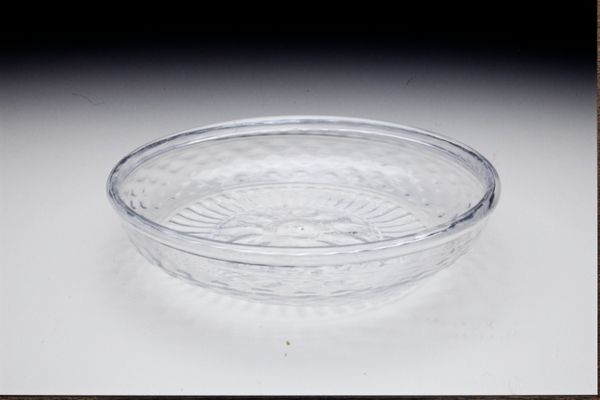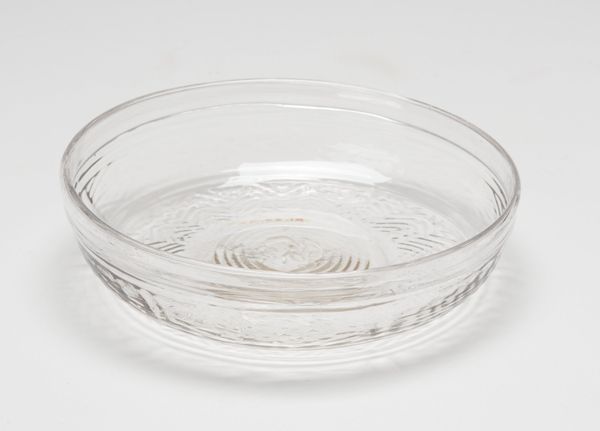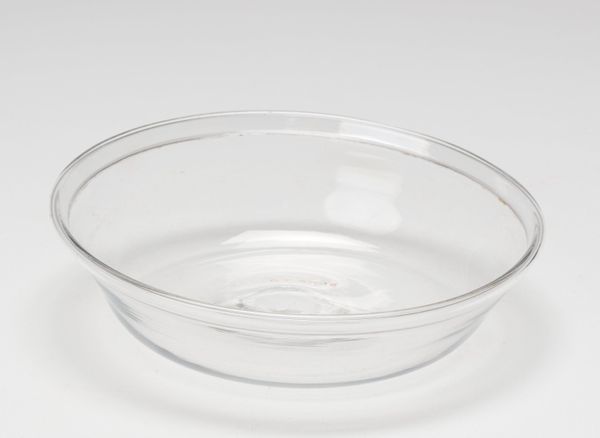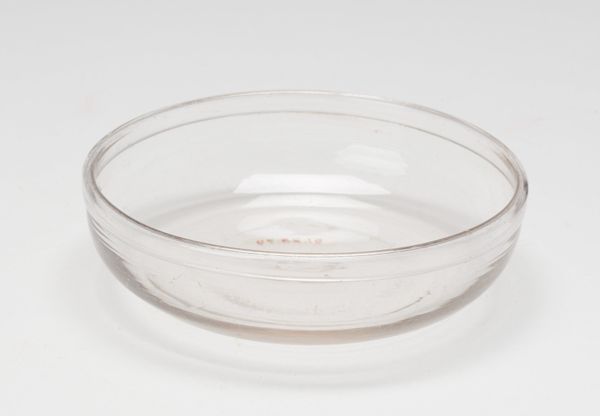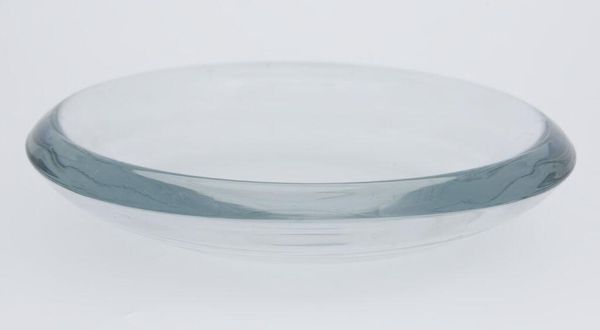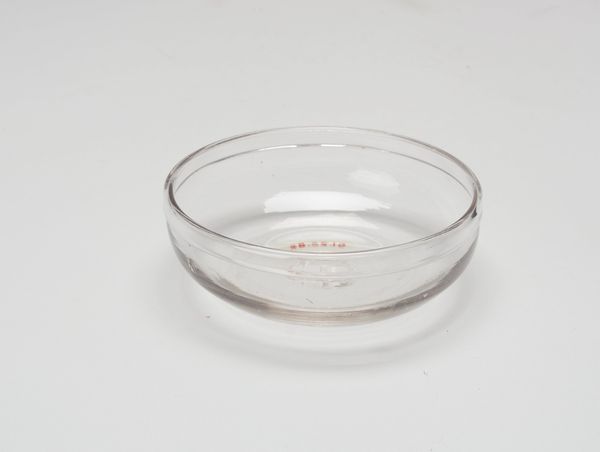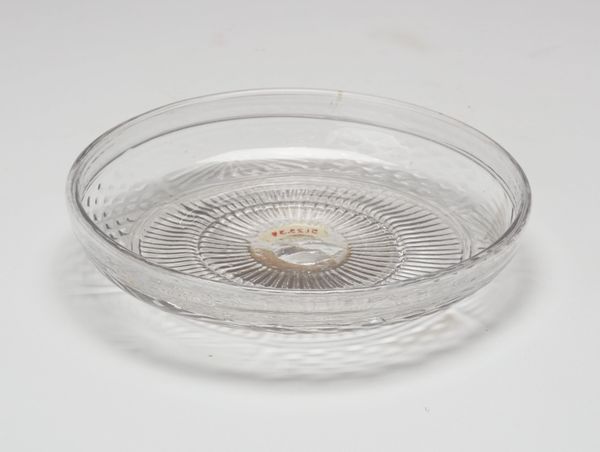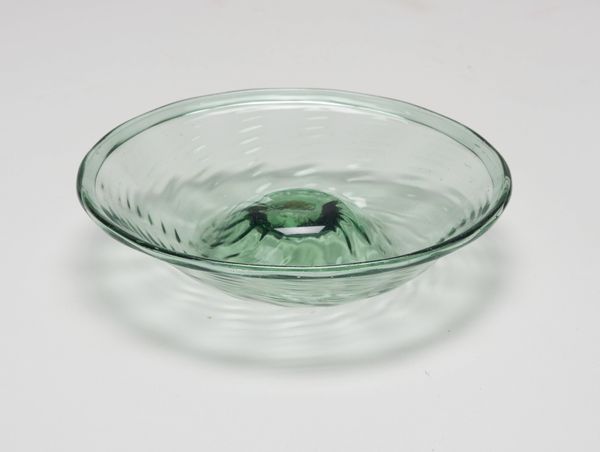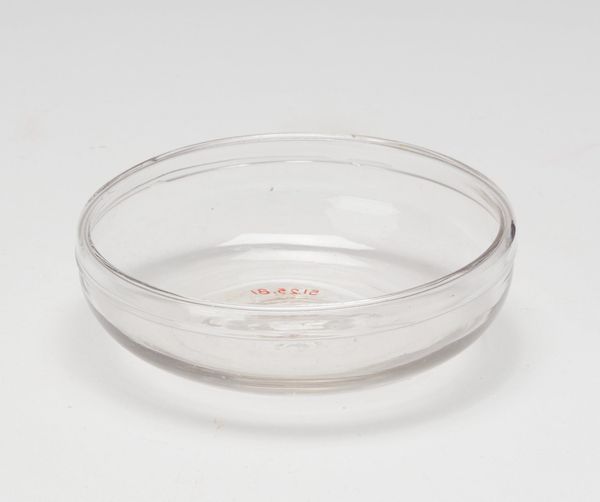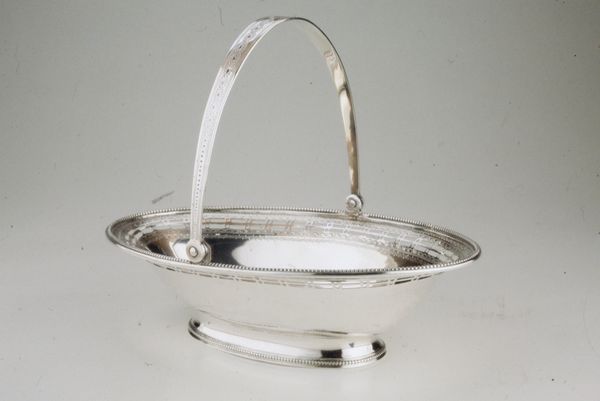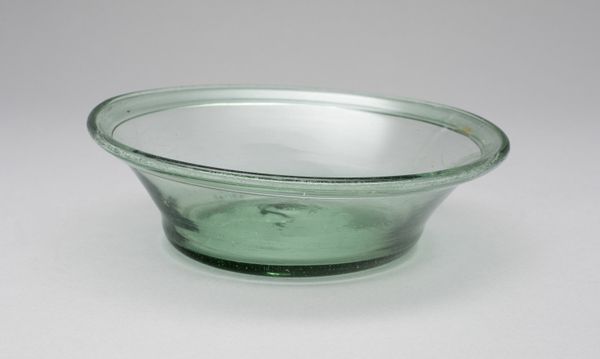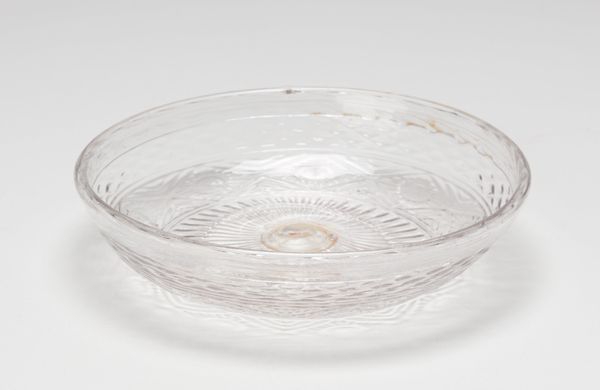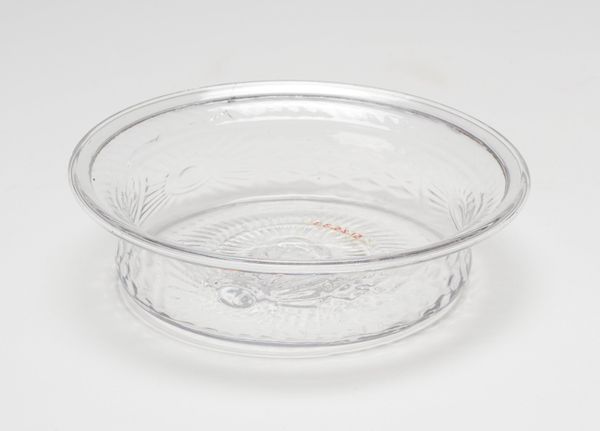
glass
#
glass
#
decorative-art
Copyright: Public Domain
Curator: Before us is an 18th- or 19th-century blown glass plate from our decorative arts collection. Its maker is, unfortunately, unknown. Editor: It’s so delicate, almost spectral. I can see the light playing through the different thicknesses of the glass, creating these subtle gradations. Curator: Indeed. Glassware like this reflects larger shifts within social dining practices, particularly the rising importance of specialized serving pieces. Tableware was increasingly reflecting status and refinement, it seems. Editor: And that’s interesting to consider the hidden labor behind such a fragile item. Thinking about who had access to luxury items like this… what it might signify in terms of class. Who was using it, and who was cleaning it, right? Curator: Absolutely. While simple in its design, the making of such a thin-walled glass form required expertise, demanding skill and time to blow and shape the molten glass into this refined form. Editor: There's something about its fragility that speaks to the vulnerability inherent in systems of power. A single chip could destabilize this entire vision of refinement. Is it only available to be gazed upon? Could this object be useful for a banquet setting or would it immediately be put behind display? Curator: Often, items like these would be heirlooms or treasured objects to be used only at very special events or times in a person’s life, so that sense of fragility had to have loomed large, surely. Editor: When I think about our collection of decorative arts, there’s often an imbalance—so much emphasis on the finished product. Where are the histories of the glassblowers, the people who truly gave this object its shape? Curator: I agree; it calls for an intersectional approach that places emphasis on these often silenced voices. It reminds us that luxury and aesthetics have been often subsidized with uncredited human cost. Editor: Thanks for pointing that out. These dialogues are helpful because it prompts me to wonder how these power relations continue today, even informing which artworks we prioritize displaying and considering how we contextualize these stories to today's audiences. Curator: A pertinent question and reminder to consider those pasts with today's audiences in mind.
Comments
No comments
Be the first to comment and join the conversation on the ultimate creative platform.
